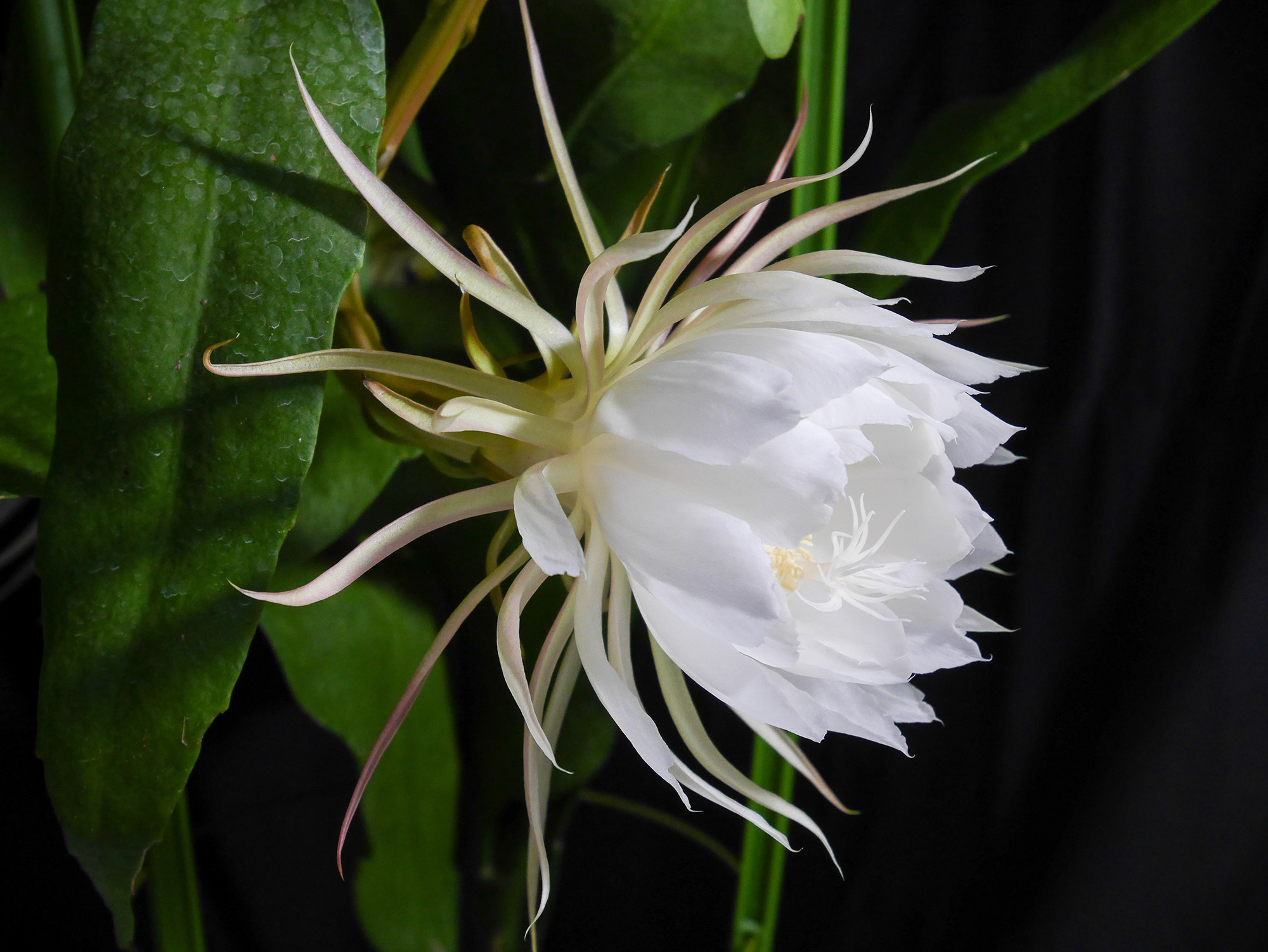- © 2025 Annapolis Home Magazine
- All Rights Reserved

The other day, I was sitting on my back porch, staring at the bees clustered around the iris in full bloom in my garden. Three bees, in particular, rose up and hovered six inches or so from my eyes. Over the next few minutes, their buzzing became louder, just short of menacing. I think one made eye contact with me, which was particularly unsettling. I felt, also, strangely exhausted by their activity. As evening approached, I looked forward to a little peace and quiet. After all, gardens are mainly at their best and busiest during the day. But then I thought about flowers that bloomed at night and realized a whole new cycle of activity begins with the absence of the sun.
Things are quieter, for there are surprisingly few nighttime pollinators. They include certain moths, bats, and beetles. Yet, night-blooming flowers have an intensity all their own. They respond to the light from the moon and stars, and some bloom only during a full moon. Because nocturnal pollinators must find them in the dark, they must blossom quickly and extravagantly, right before our eyes. Draw close and inhale. Often, they emit a potent fragrance, the better to seduce their winged visitors. For example, before the moonflower blossom peaks, the buds emit a strong perfume. Two hours later, this fragrance becomes highly unpleasant. Researchers note that the chemical compounds responsible for the odor are benzyl alcohol, benzyl benzoate, and benzyl salicylate—all chemicals that attract the night-active hawkmoth pollinator.
There is much going on under the cover of darkness. In a recent article in the Yale Journal of Biology and Medicine, Renee M. Borges notes that producing flowers is a “water-demanding process.” Millions of years ago, some plants, to avoid extinction, began to bloom at night to prevent excessive water loss through evapotranspiration, a process during which plants release water vapor from their leaves at the same time that water evaporates from the soil.
Some flowers became “thermogenic”—capable of pro-ducing “an unusually large amount of heat during the floral stages.” This is intoxicating and enticing to some nocturnal insect pollinators. Insects that visit the floral chamber, such as the scarab beetle, may linger to absorb energy before moving on. Thermogenic nocturnal flowers include the Sacred Lotus (Nelumbo nucifera) and the Coconut Magnolia (Magnolia coco).
With all of this new information in mind, my plan for the summer is to grow night flowers and stroll to the garden to better appreciate them. I will be doing two important things: avoiding the bees that seem to have it in for me and showing respect for the powers of the night. I will take a few moments to wonder anew at the moon’s forces that influence not just the tides, but the flowers that blossom in the darkness.
Queen of the Night Epiphyllum oxypetalum
Egyptian White Water Lily Nymphaea lotus L.
Moonflower Ipomoea alba
Devil’s Trumpet Datura
Angel’s Trumpet Brugmansia
‘Casa Blanca’ Lily Lilium
Evening Stock Matthiola longipetala
Night-Blooming Jasmine Cestrum nocturnum
Pictured: Queen of the Night is a stunning orchid cactus that in Southern Mexico grows on trees. It is extraordinary as the flowers bloom only once a year, in the evening, for about 12 hours. As a houseplant, it is easy to grow and prefers indirect sun. Water every two weeks and watch closely for the elegant buds to emerge. Plan a midnight “watch party,” as it will unfurl very slowly right before your eyes.
© Annapolis Home Magazine
Vol. 14, No. 3 2023